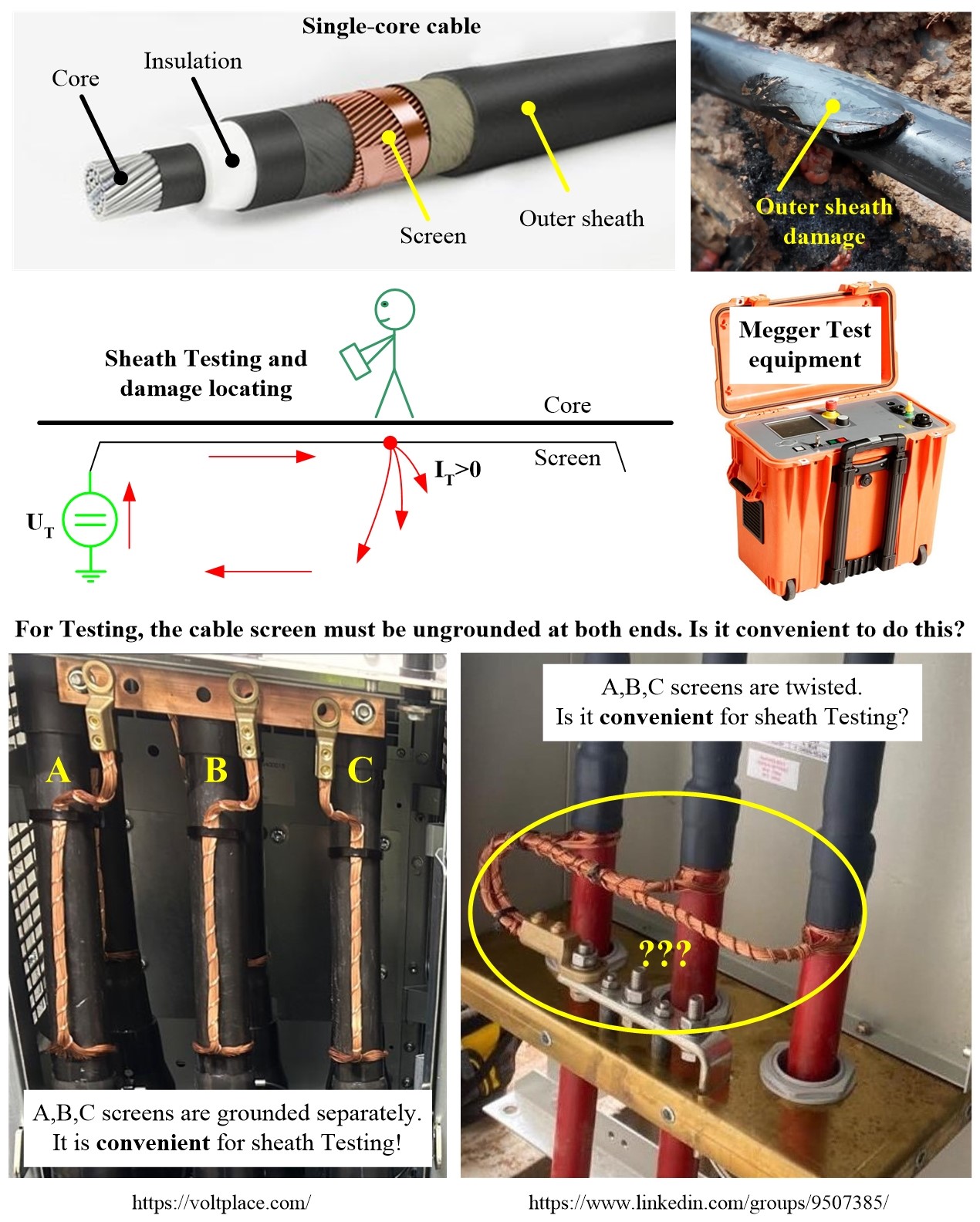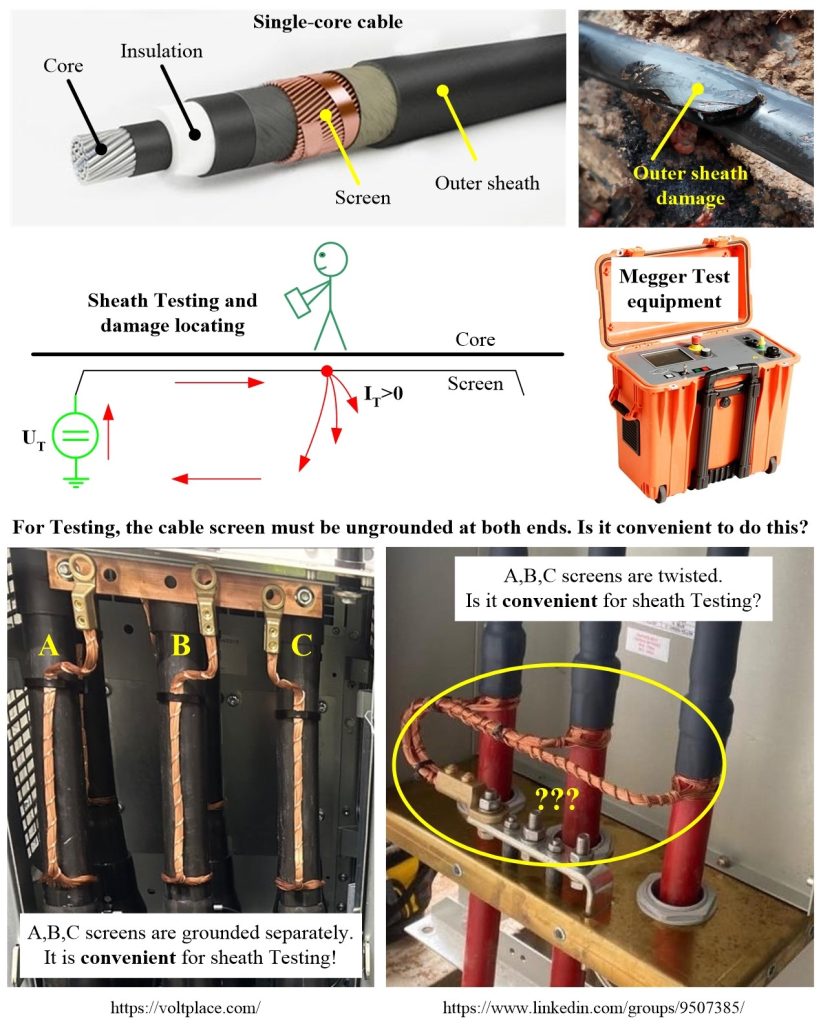
The perfect grounding of the screen may be bad
The reliability of cable lines is catastrophically dependent on the quality of installation work. Therefore, we can only be glad that there are a large number of experts all over the world who do their job accurately and precisely. Certainly, some of them may even be called as perfectionists. However, in my opinion, there is a case where perfectionism can get in the way. Let’s discuss such a case.
Single-core cables are widely used in all electrical networks. In AC 50 Hz three-phase networks, to build a cable line, we need to lay three single-core cables at once (phases A, B, C). Each single-core cable has its own metallic screen (most often made from copper wires). The screen is needed in order to equalize the electric field inside the insulation and eliminate this field outside the cable. In order for the screen to perform its function, it must be grounded.

In medium voltage networks of 6-35 kV, as a rule, grounding of cable screens is performed simultaneously on both sides of the cable line. In my opinion, this is not the best solution, because of active power losses in the screens. However, let’s not talk about losses now.
Sometimes, when laying cables and operating them, damage to the outer sheath occurs. Water can get into the cable through such places, which subsequently leads to degradation of insulation and short circuits. Therefore, it is important to find all sheath damages in time and seal them.
The sheath tests for each phase (each single-core cable) are performed by applying a DC voltage of 10 kV (sometimes 5 kV) between the screen and the ground for a time of 1 minute (sometimes up to 10 minutes). If the sheath has not passed the test, then the procedure for locating the place of damage begins.
To do such tests (and damage locating), the cable screens, of course, will have to be ungrounded. Also the screens of phases A, B, C will have to be separated from each other. But will it be convenient to do this if the three screens A, B, C are so beautifully twisted with each other as in the photo shown below from the right?
Both grounding methods shown below are elegant. But I would recommend the left one, with no twisting.
